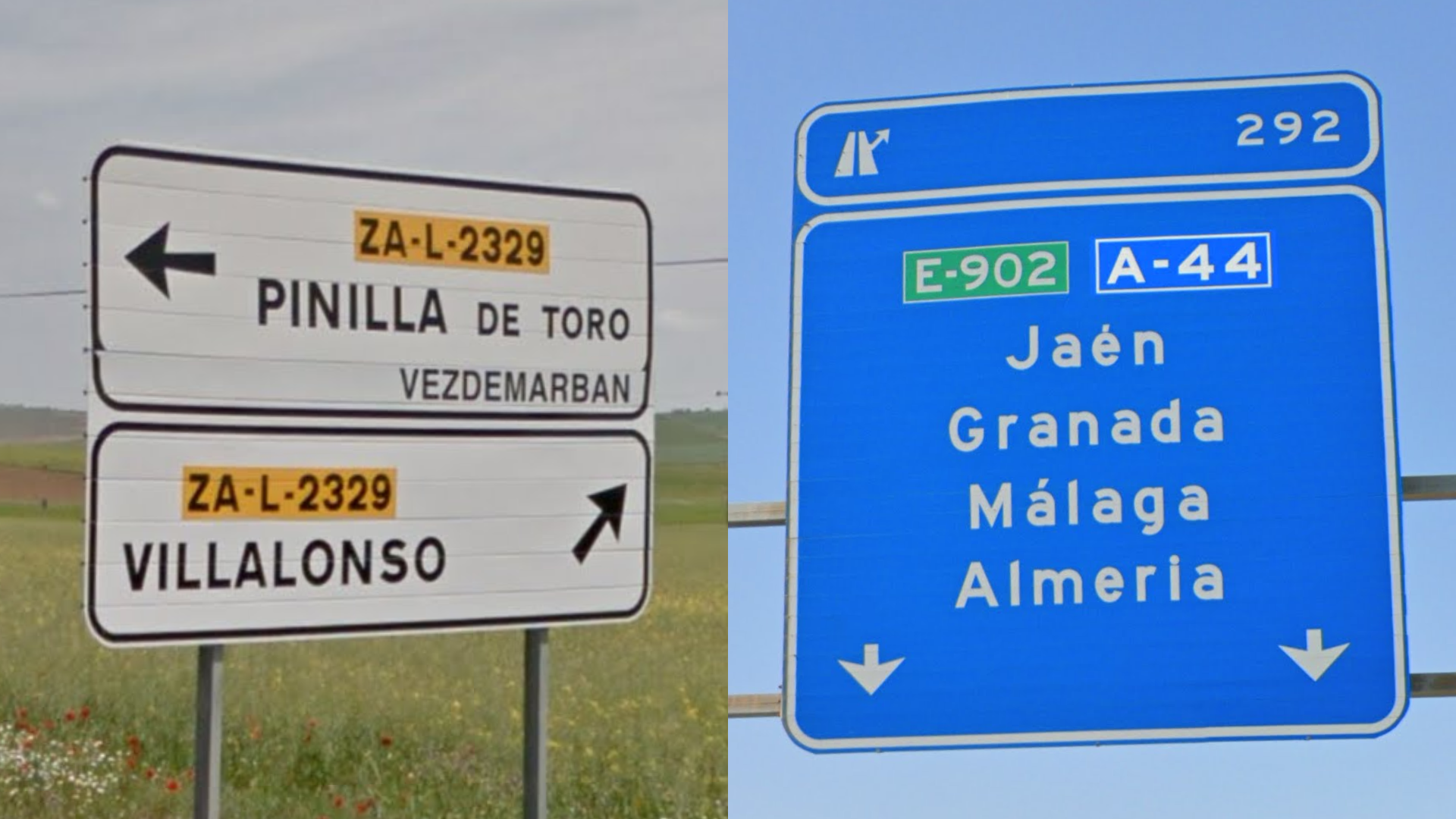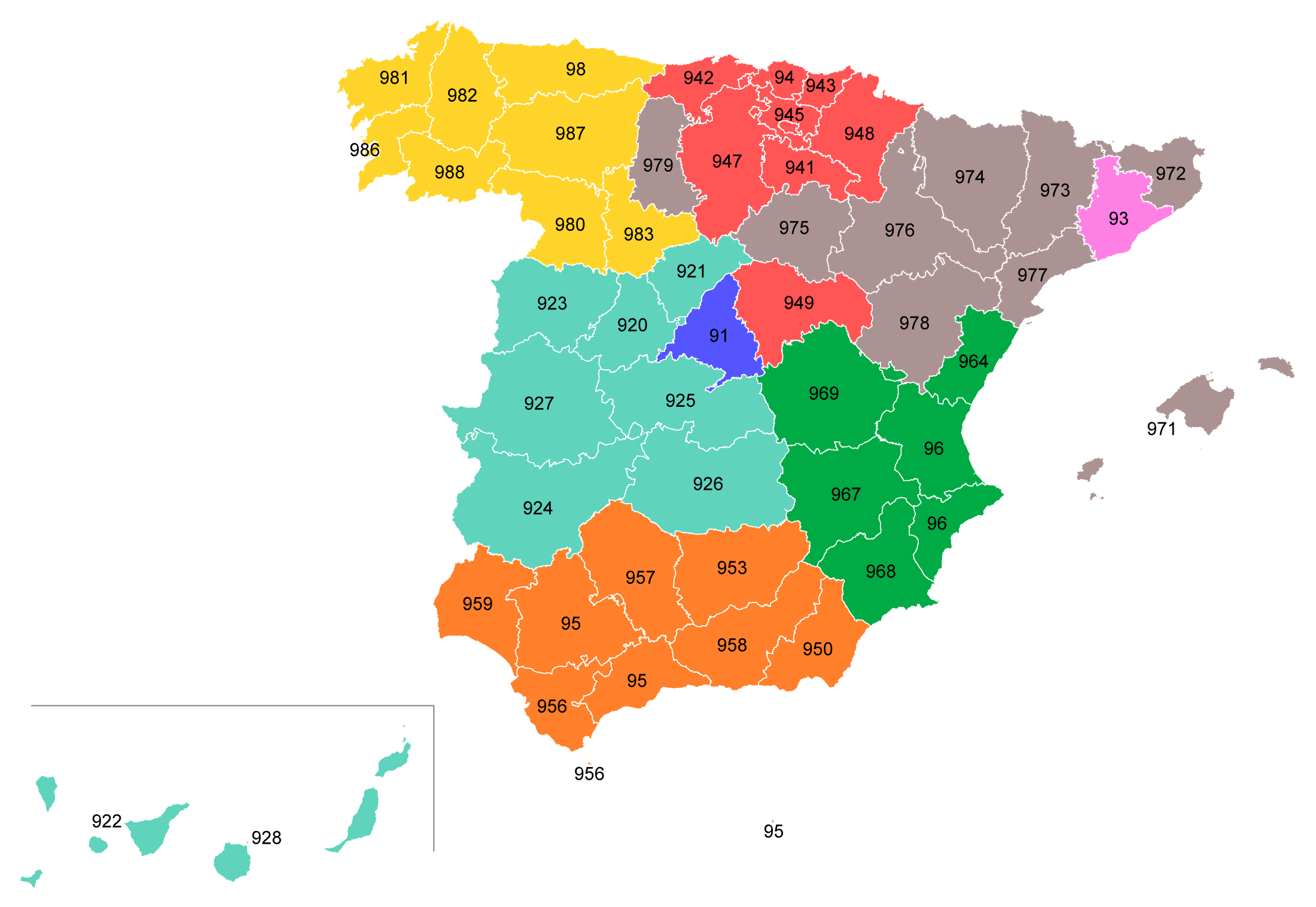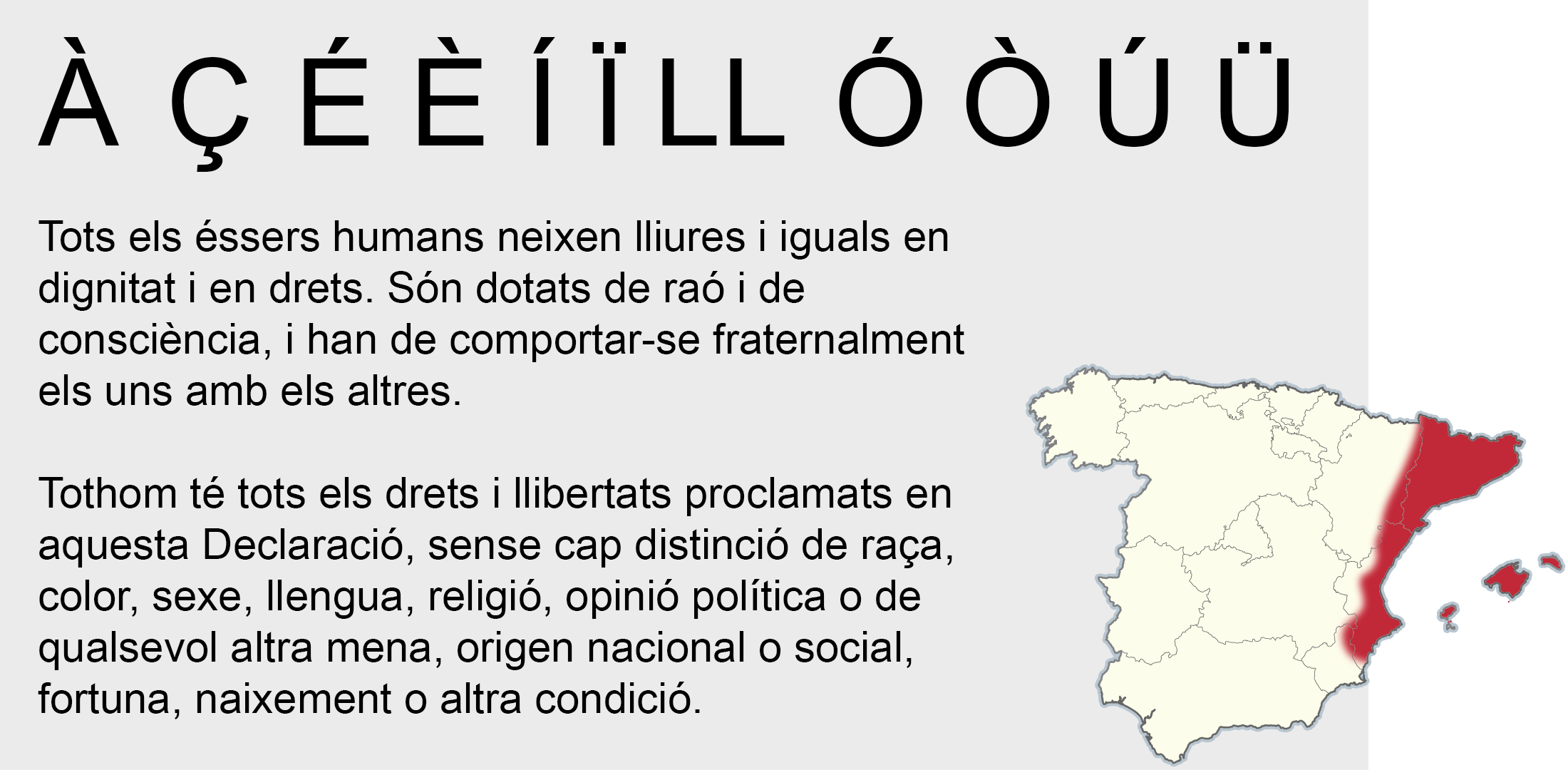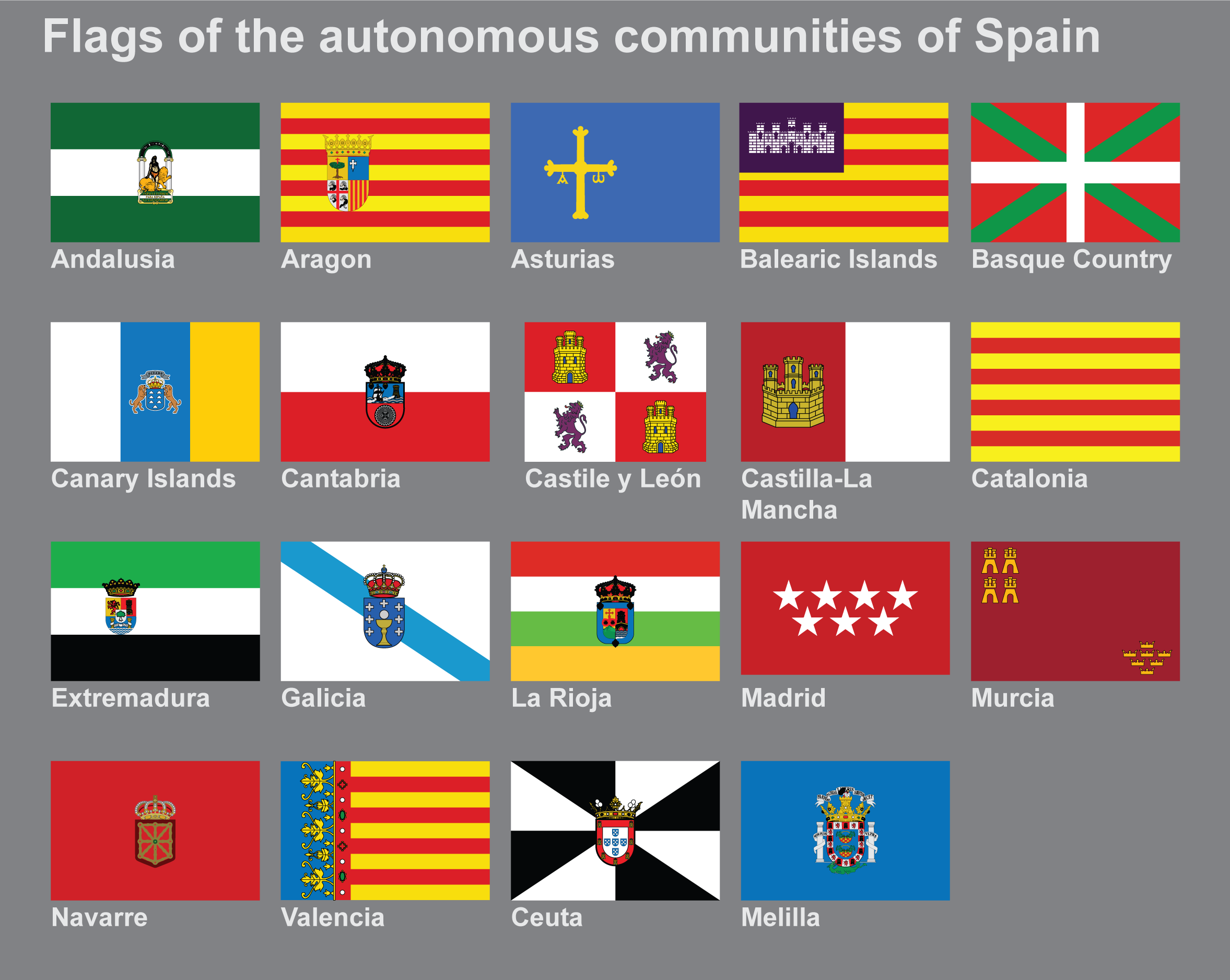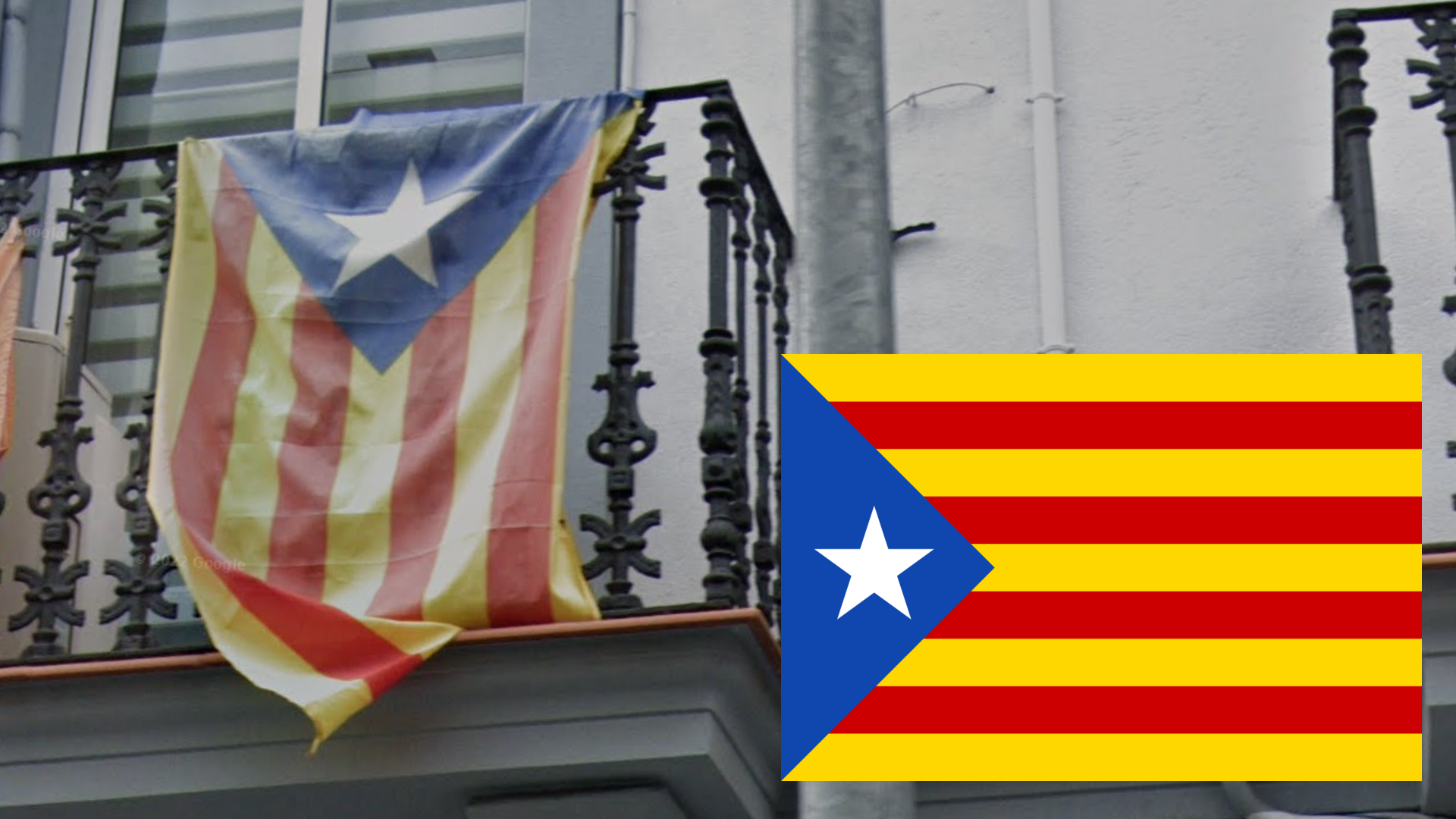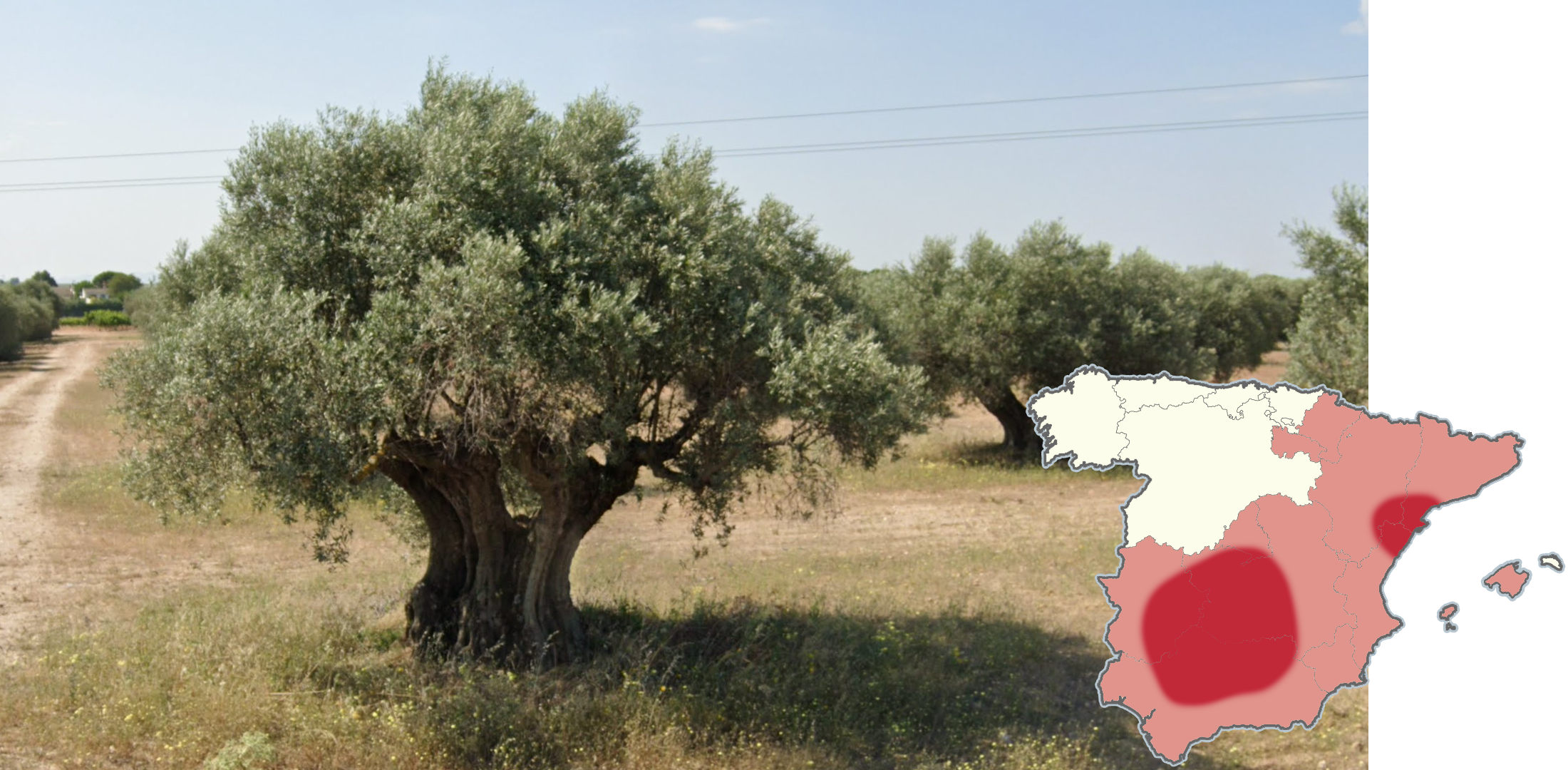
Spain
The standard Spanish bollards have a yellow-orange reflector on the front and two white dots on the back (though the back can also be blank). They are typically hollow.
NOTE: Very close to Andorra, you can find a slightly different bollard, which is also used in Andorra itself.
“French style” poletops are common in Spain. They are shaped like an upside down triangle, with a horizontal top bar that is curved slightly upwards. They are usually found on top of tall ladder poles or medium sized steel poles.
NOTE: As the name suggests, French poletops are also very common in France.
Spain has distinct road markers with a variety of colourful borders. The code on top is the number of the road.
NOTE: Andorra has similar markers and the letter codes preceding the road number on these markers are often an important region-specific clue. You can learn more about these codes in the region guessing section.
In rural areas you will often find hunting signs. There are two versions, both of which are unique to Spain. One is a simple white sign with a text starting with “coto” and ending in “caza”. The other one has a diagonally divided black and white background.
NOTE: These signs have an identifying code that can sometimes be read. In this case “Ex” stands for Extremadura.
Spain has yellow reflectors on rounded A-type guardrails.
NOTE: Belgium, Andorra and Gibraltar also have yellow reflectors. For a good overview of European guardrails, see this infographic.
Spanish stop signs have a distinct small font.
NOTE: These are mostly useful to distinguish Portugal from Spain: Portuguese stop signs have a noticeably larger font.
Red borders on road signs extend all the way to the edge of the sign. There is no small white border separating the red part from the edge.
NOTE: France, Italy and Portugal have a small white border on the edge of such road signs.
Spain has two chevrons: black with white arrows, and blue with white arrows. Chevrons with a single arrow are rare.
NOTE:
In Southern Europe, black with white chevrons can be found in Italy, Greece and Albania.
France is the only other European country that has blue with white chevrons.
Portugal has black with yellow chevrons.
Spanish is the main language in most of the country. It is a Romance language that is closely related to Portuguese.
Spanish and Portuguese can look very similar. Some key differences between the two:
Ñ is unique to Spanish.
Ç and lh are unique to Portuguese (Ç is also present in Catalan).
Portuguese uses the -ao word ending, and -nh- instead of ñ.
Portuguese uses da and do, where Spanish uses de.
NOTE: Spain also has several regional languages, some of which are more common than Spanish in their respective regions. These languages are discussed in more detail in the region-guessing section.
You will often find no parking signs in front of garage doors and gates. They will usually read “Vado permanente”.
These signs will very often have the name of the municipality after “Ayuntamiento de”.
NOTE: Italy uses signs that read “Passo carrabile”.
Spain has highly diverse landscapes, ranging from lush Atlantic forests to bone-dry semideserts. Elevation is also varied: highland plateaus interspersed with rolling hills are common, but you might also encounter jagged mountain ranges and very flat lowland areas.
Generation 3 cars can have long, short or no antennas. The back of the car is usually not visible, but when it is, it can be either black or white.
NOTE: Coverage in Eastern Andalusia, Huesca, and Lleida sometimes has a long antenna with a distinctive white top.
Google used a weird, low-quality camera in Spain. This camera is known as the official Ari (or “Shitcam”). It has a wide circular car blur, and can be distinguished from Generation 2 by its lack of a sky halo and often somewhat brownish colours. A good map will not usually include this coverage, but it is good to be aware of its existence, in order to not be caught off-guard by it.
NOTE: Within Europe, Spain and Finland are the only countries that have coverage with this camera. This camera should not be confused with unofficial coverage. The most similar country with this camera is Lebanon.
Spanish regional road numbers feature region-specific codes. These are found on road markers, and sometimes on direction signs.
For example, the SG code on road markers refers to a road in Segovia province.
The infographic shows almost all the regional codes, except for some very rare codes. Click on the image to enlarge it.
NOTE:
National roads use the following codes: E, AP, A, R, N. These can be found anywhere in the country.
Be careful: A is also used for community roads in Andalusia and Aragon.
Some autonomous communities do not have community roads, only provincial roads. These have been indicated with grey on the map.
Asturias uniquely has a large variety of local road codes.
Ceuta only has N-roads. Melilla uses the code ML.
Catalan is a Romance language that is closely related to both Spanish and French.
It is spoken in Catalonia, the Valencian Community, and the Balearic Islands. In Catalonia and the Balearic Islands, it is (much) more common than Spanish on signage. The Valencian Community is more bilingual.
If you are unfamiliar with Romance languages, it can be hard to distinguish between Catalan and Spanish.
The Catalan word for “and” is i, compared to Spanish y.
The grave accent (à, è, ò), is exclusive to Catalan within Spain and very common to see in words, especially on à.
Basque is a language isolate that is spoken in the Basque Country and northern Navarre. In these regions, you will find a mix of Spanish and Basque signs (often bilingual).
Basque is not related to any other language, so it has a unique look. Z and K are common letters.
NOTE: Basque is also used in the border area of southwest France.
Galician is a Romance language that is closely related to Portuguese. It is (unsurprisingly) spoken in Galicia. Compared to Catalan, it is less dominant, meaning you will still find a lot of Spanish-only signs in this region.
Galician can look very similar to Portuguese. Some ways to tell them apart is the use of ñ and the lack of ç in Galician.
Flags
The regional flags of the autonomous communities are reasonably common, so it is worth learning them.
NOTE: You can practise them with this quiz.
The Catalan Independence flag is not official, but is commonly found in Catalan-speaking areas. It uses the red-and-yellow striped Senyera pattern that is also used in four of the autonomous community flags.
Spain is a very mountainous country.
The highest mountain ranges are the Pyrenees in the northeast, and the Baetic System (which includes Sierra Nevada) in the southeast.
The Meseta Central is a high altitude, mostly flat area in the centre of the country. It is surrounded by several smaller mountain ranges: the Cantabrian Range in the north, the Iberian System in the east, and Sierra Morena in the south.
Within the Meseta Central there are two more mountain ranges: the Sistema Central (going from the Portuguese border to the northeast of Madrid) and Montes de Toledo.
There are four big river basins in Spain. The Tajo and Guadiana cross Extremadura and go into Portugal, the Guadalquivir covers most of the southwest of Andalusia and the Ebro river basin starts in Navarra and flows into the mediterranean in the south of Catalonia.
The Pyrenees is a large mountain range on the border between Spain and France. Its mountains are some of the highest in all of Spain. It can be recognized by its light grey rock and abundance of pine trees. Local architecture features many rock walls.
NOTE: Andorra and the French part of the Pyrenees look very similar in terms of landscape and architecture. Also consider that the exclave of Llívia is part of Spain.
Castilla la Mancha can have completely flat landscapes, which are not that common in Castilla y León. Half of Spain’s wine is produced in this region, so vineyards are fairly common.
In the western provinces of Ciudad Real and Toledo, it is very common to see olive tree plantations, generally in flatter ground than those found in Andalusia.
Open fields sparsely populated with holm oaks (Quercus ilex) and cork oaks (Quercus suber) are very common in Extremadura and neighbouring regions. These species of oaks tend to be on the smaller side, and have a Mediterranean look. Be careful not to confuse them with olive trees, as they can look superficially similar to the untrained eye.
North of Cáceres the vegetation is more lush and winter and spring coverage is more common.
Around Córdoba and Jaén, you can find massive olive tree plantations growing over rolling hills and going as far as the eye can see.
The bigger and more remote plantations are usually only covered in Generation 2.
In the Guadalquivir river basin you can also find many orange plantations, usually in much more open and flat terrain than those of the east coast.
There are some extensive plantations in the mountains, but coverage is sparse there.
Stone pines (Pinus pinea) can be recognized by their fluffy leaves, and compact bulbous crown that is wider than it is tall.
Forests of exclusively stone pines in a flat area are very common around Valladolid and Huelva. It is common to see them in the mountains close to Barcelona in residential areas.
Aleppo pines (Pinus halepensis) also have fluffy leaves, but their crown is less compact, more disorganised looking, and often taller, compared to stone pines.
This is the most common pine on the east coast of Spain and the Balearic Islands.
Baltic pines (Pinus sylvestris) are tall and thin, with a dark bark that sheds at the top, revealing the orange-red wood underneath. They usually do not have branches on the bottom half of the trunk, especially when fully grown.
Baltic pines can be found in mainly three mountain ranges: the Pyrinees, Sierra de Guadarrama and the Iberian System.
Maritime pines (Pinus Pinaster) has two variants in Spain, near the Atlantic coast, it has grey bark with red undertones, and fluffy branches that point upwards. Older trees often don’t have any branches in the bottom half of the tree.
NOTE: Plantations of this pine are extremely common in north and central Portugal.
In the rest of Spain you can find the Mediterranean variant of the tree. It still has a grey bark with red tones, and it is usually very fissured.
You can find the tree in most of the mountain ranges in central and southern Spain. Extensive plantations in flat ground can be found North of Segovia.















